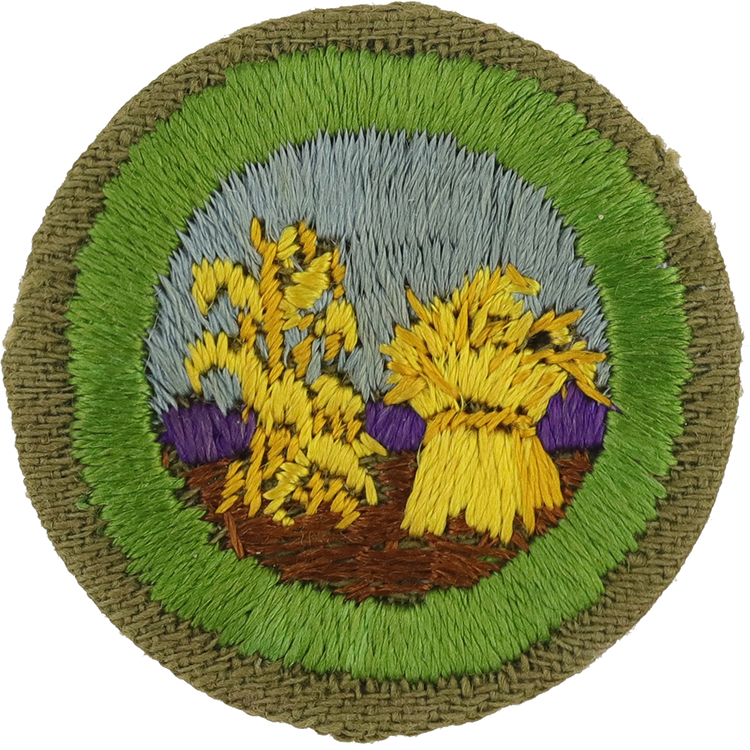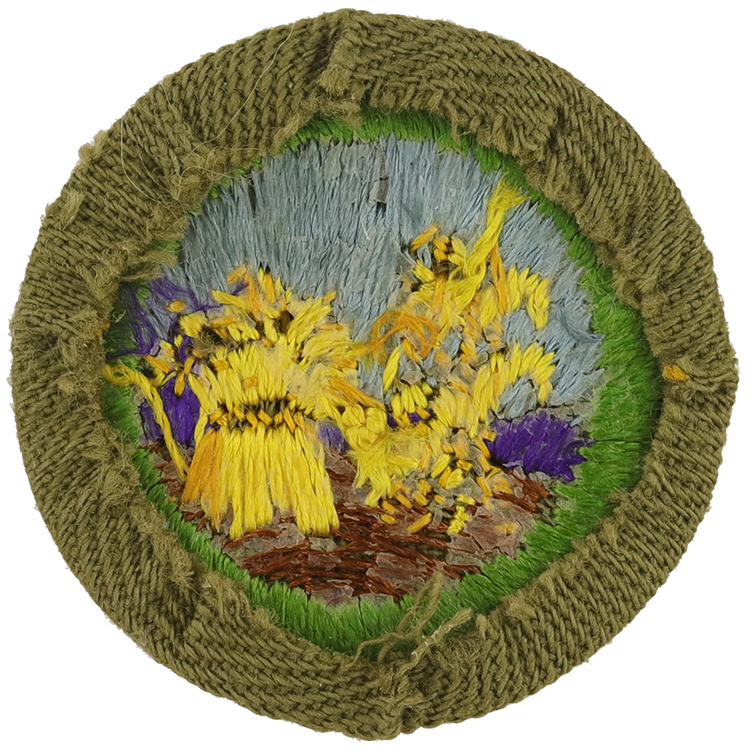
Fig. 1: SmaCer-D3b-Front
- Cloth: War
- Design: Corn is NOT tasseled/li>
- Embroidery: Cotton continuous

Fig. 2: SmaCer-D3b-Reverse
- Back: Plain NO imprint with starch
Item Name: Small Grains 1942 - 1945
Item ID: SmaCer-D3b
Collector Rating: 1
Requirements December 1941 until June 1948
To obtain this Merit Badge, a Scout must meet four of the eight requirements in each of Parts I and II ( or a total of eight of the sixteen requirements) PART I (Four of the eight requirements which follow including requirement No. 2)
1. Gather and show bottle samples of at least five of the small grains grown in his state or section.
2. Make a seed tester and conduct a germination seed test of 100 small grain seeds.
3. Explain and show by use of soil, two methods of preventing soil erosion in growing small grains.
4. Gather and show samples of three small grain plants, showing root system, stock, leaves and seeds.
5. Explain and demonstrate in an outdoor seed-bed or large box filled with soil the preparation of a seed-bed and show how to plant wheat and oats or any two small grains native to his section.
6. Prepare exhibit samples for county or state fair by the use of three small grains grown in his section. (Judging requirements by use of pure seed standards.)
7. Grade wheat and oats into three commercial grades as used in his state and national markets.
8. Operate a grain drill and demonstrate how to adjust the drill for planting different sized grains.
PART II (Any four of the eight requirements which follow:)
1. Show samples of five small grain products other than food and indicate crop from which each is made.
2. Prepare an exhibit of four cereal crops and show in each case the grain and the food cereals manufactured therefrom.
3. Go to his grocery store and list all food products known as cereal foods; give package name of each, name of small grain from which it is manufactured.
4. Give the manufacturing processes of corn flakes, rolled oats, and puffed wheat, rice, etc.
5. Prepare a hot cereal in camp or at home, such as oatmeal, wheat cakes, etc.
6. On map of United States, indicate the areas where small grains are grown extensively. Locate especially wheat, rice, oats, barley and flax areas.
7. To what extent do other countries grow small grains including sorghum. Explain fully.
8. What are the food values of cereal foods? Explain fully.
OR
As a substitute for Parts I and II above, a Scout may comply with the standard 4-H Club or Home Project requirements in small grains and cereal crops, as follows:
1. Manage or operate a grain project for season or year, as required by your leaders.
2. Do all work and keep cost accounting records, as required by your project leaders.
3. Make a community, county, or state fair exhibit of grains you have produced.
4. Make a report of your work as required, and have it approved by your 4-H or Home Project Leader.
